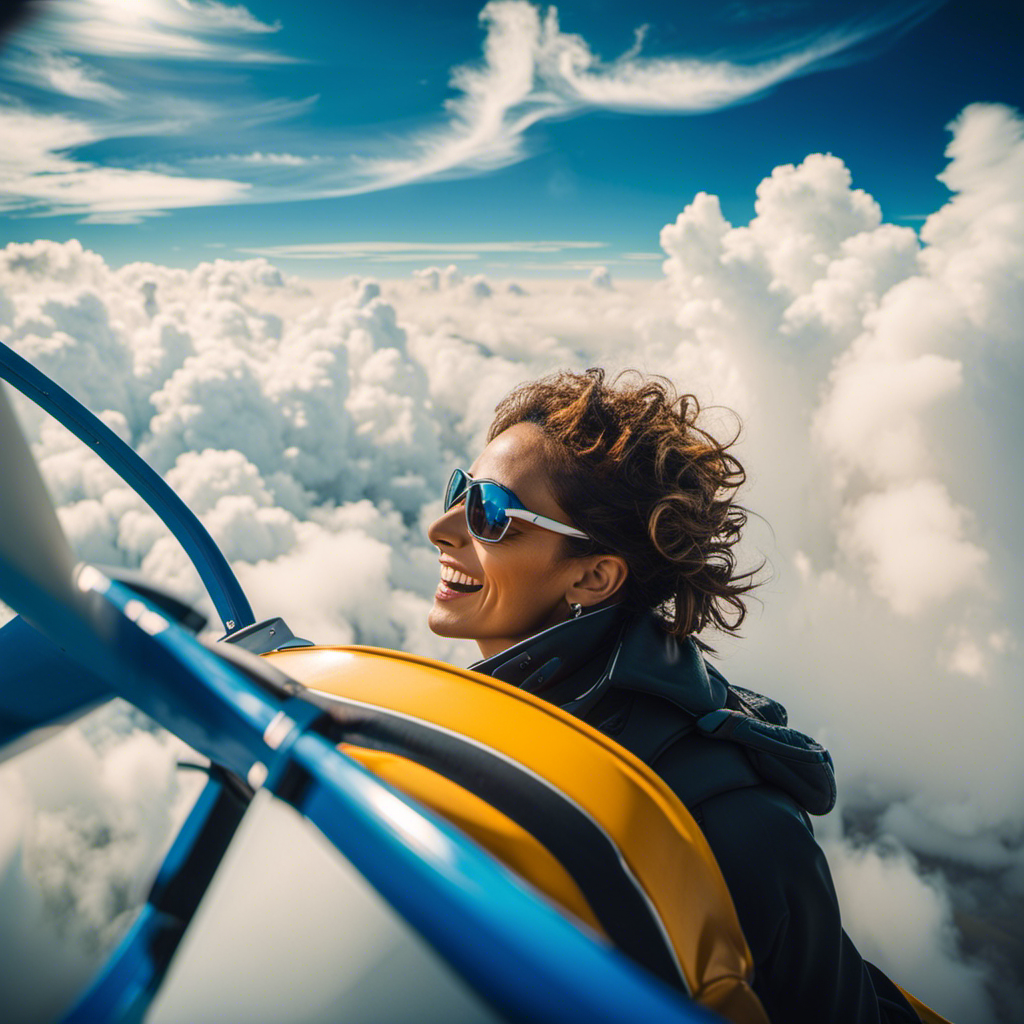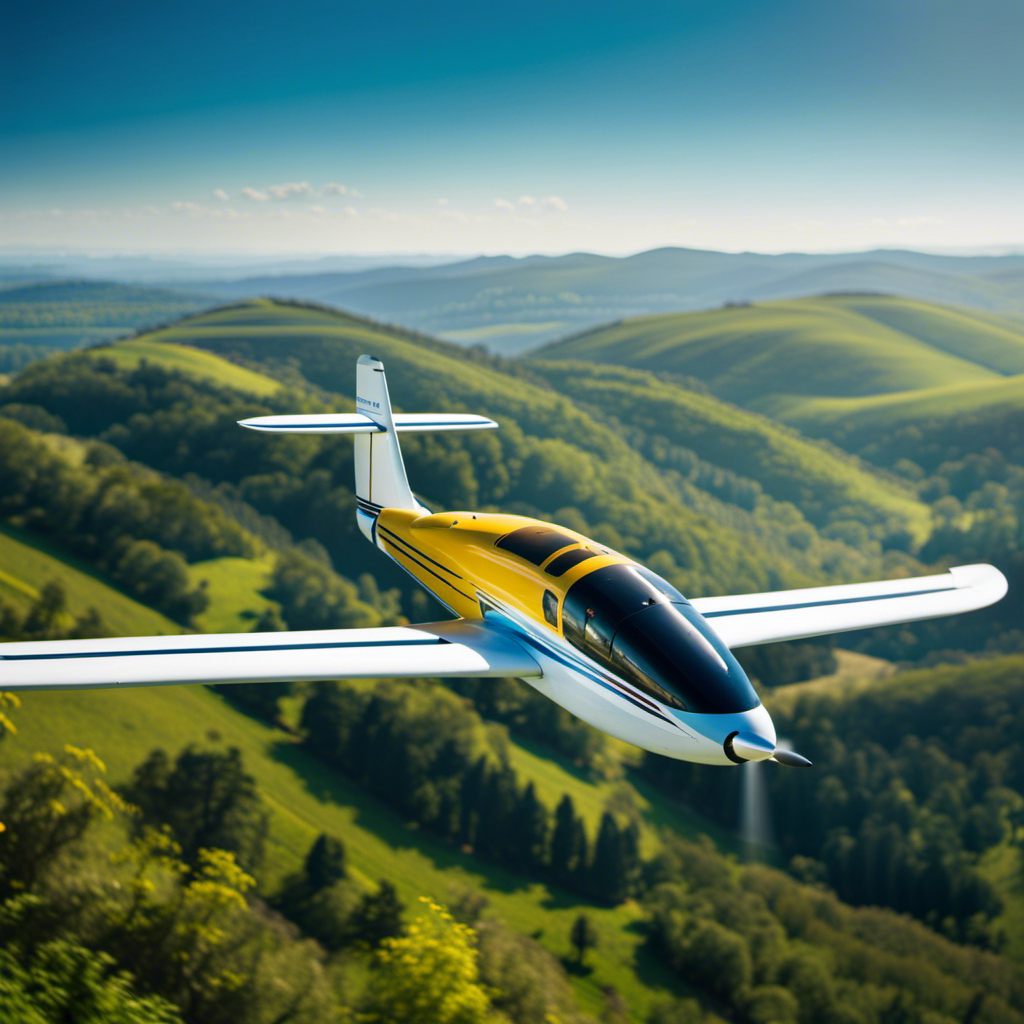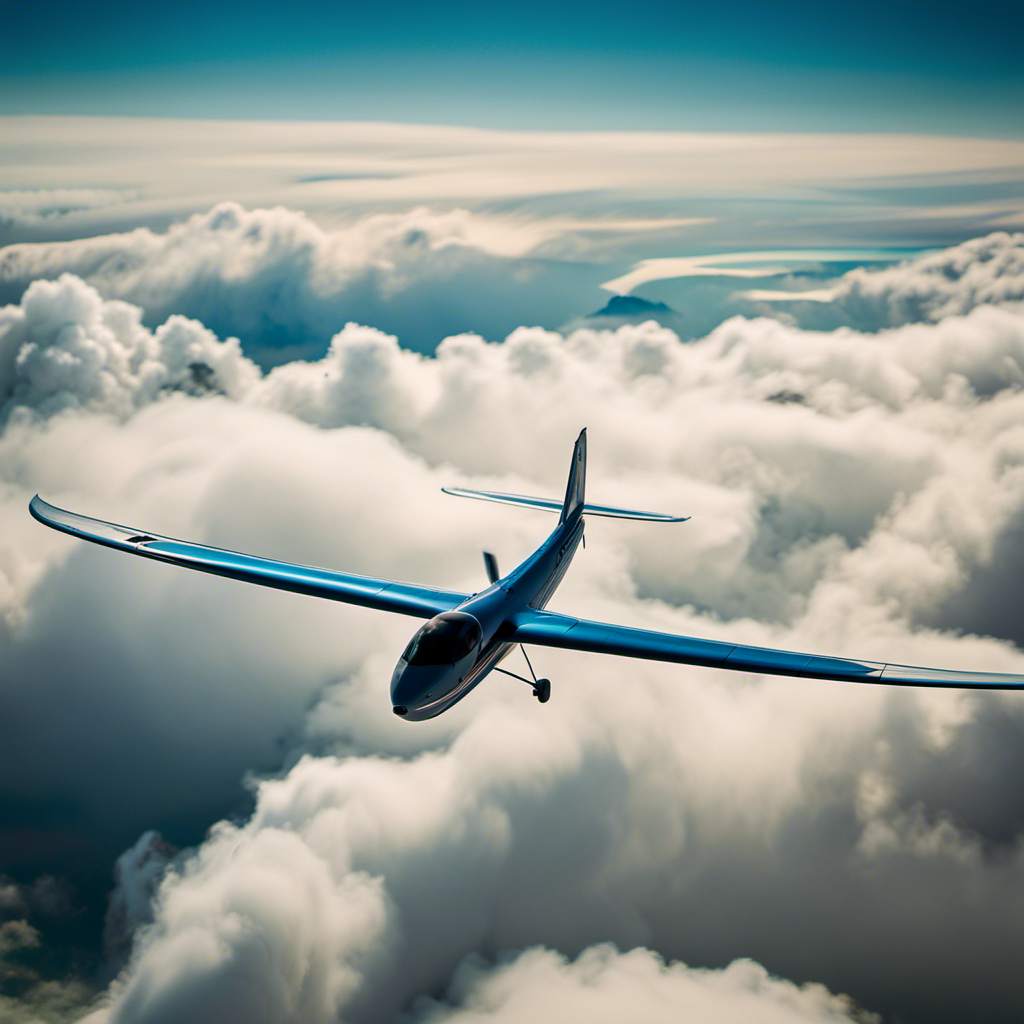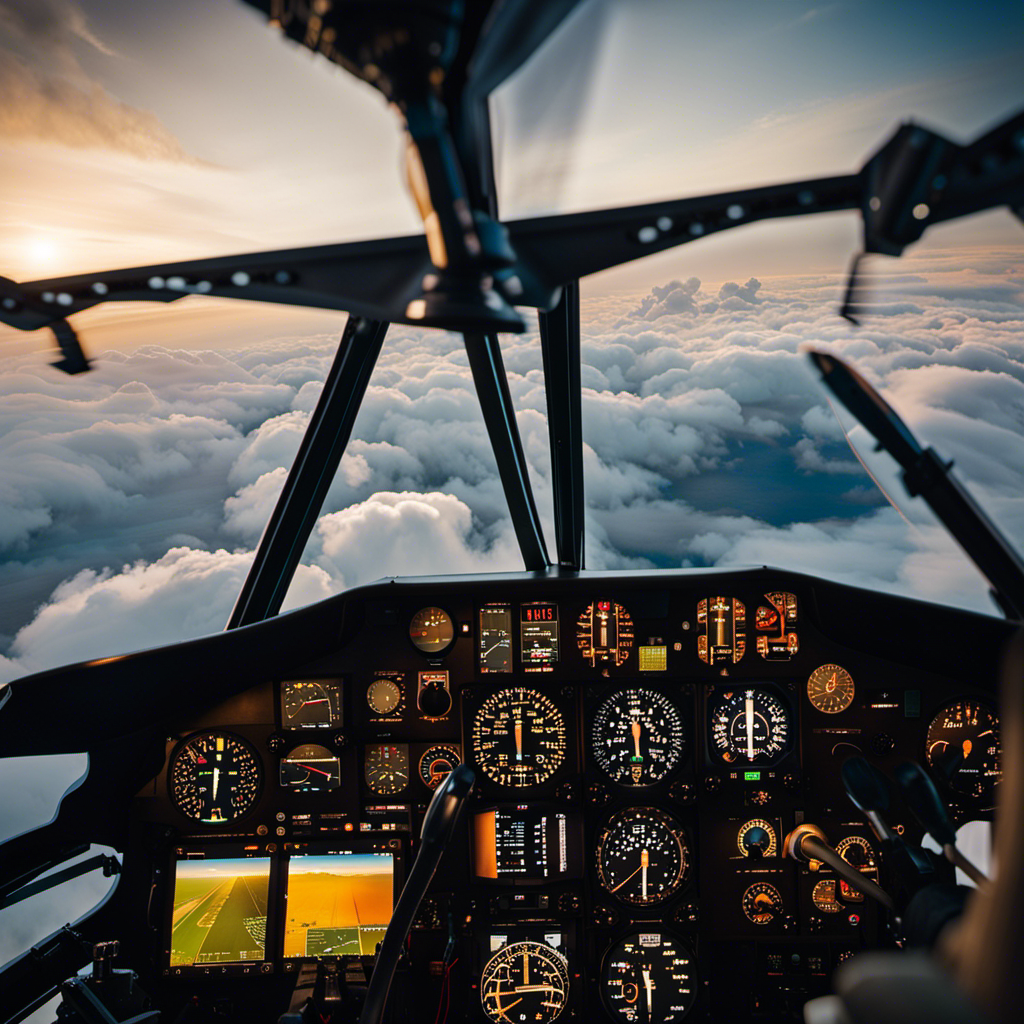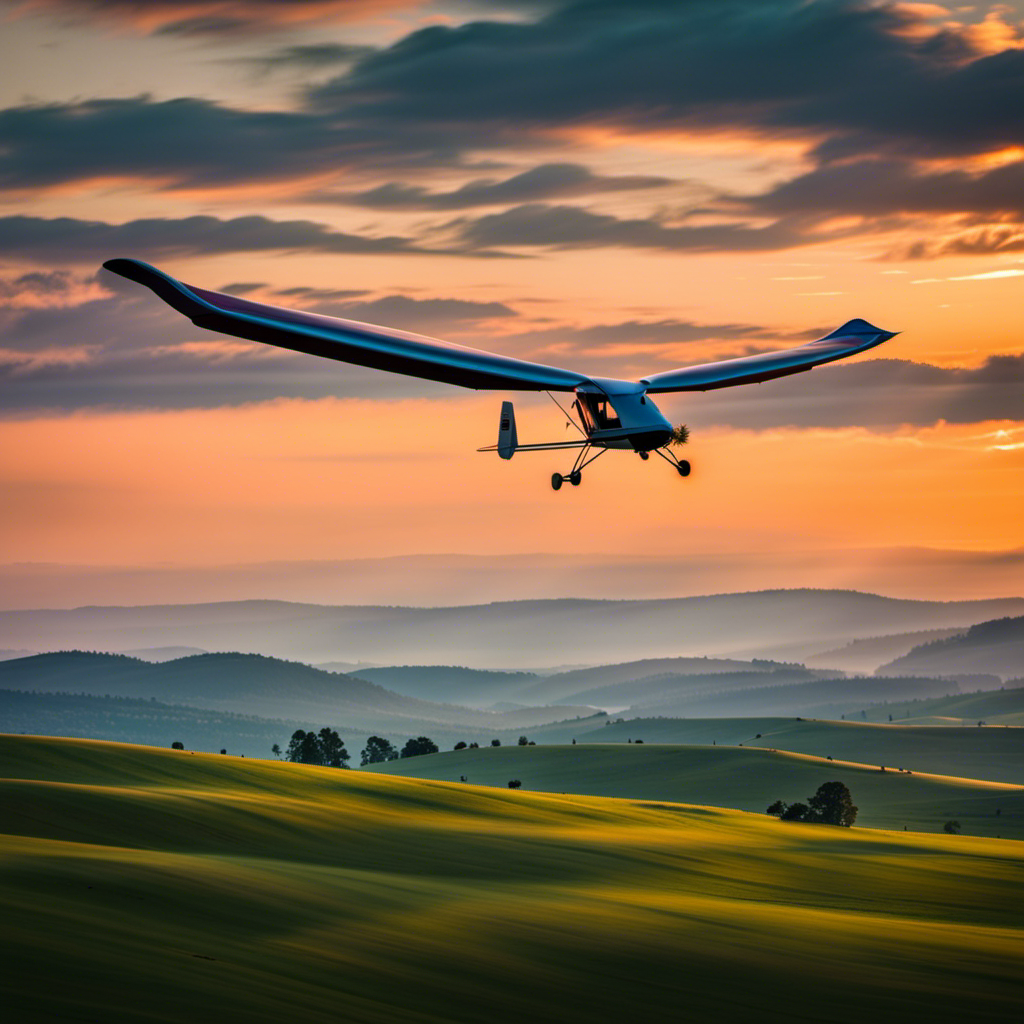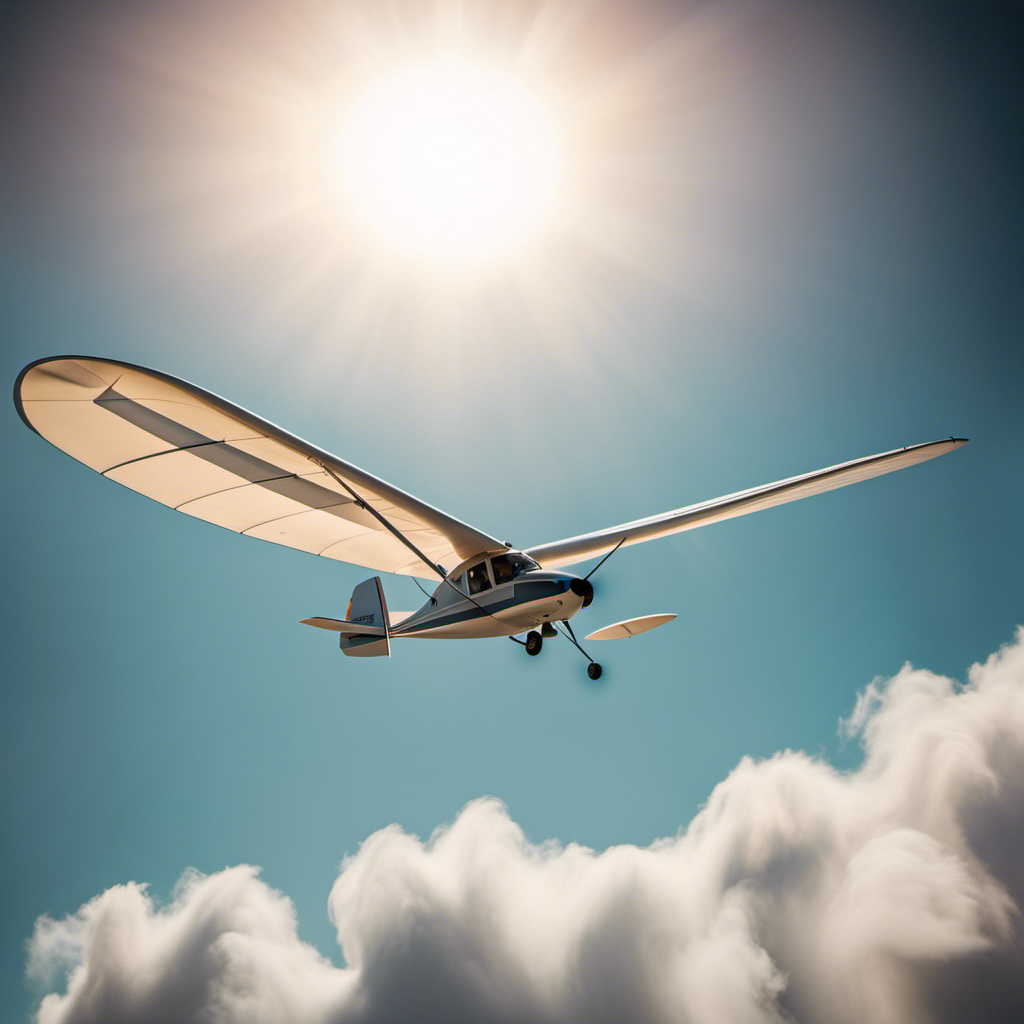Prepare yourself for an exciting adventure as you take your first glider flight. Get ready to soar through the sky, feeling the excitement of speed and the joy of flying without an engine.
From the safety briefing and equipment check to the breathtaking views and exhilarating aerobatic maneuvers, this article will guide you through what to expect on this unforgettable adventure.
So buckle up, hold on tight, and get ready to be amazed by the beauty and thrill of glider flight.
Key Takeaways
- Glider control techniques and mastery are essential for safe and enjoyable flight.
- Landing preparation and techniques are crucial for a smooth and safe landing.
- The glider ride experience offers moments of pure bliss and awe.
- Steady descent and safe landing techniques are of utmost importance for a successful flight.
Safety Briefing and Equipment Check
Before taking off, the pilot will give you a safety briefing and perform an equipment check. This is to ensure that you have a safe and enjoyable glider ride.
The safety briefing will cover important information such as parachute safety and emergency procedures. You will learn how to properly put on and use a parachute in case of an emergency.
The pilot will also go through a pre-flight checklist to ensure that all the equipment is in working order. They will inspect the glider for any signs of damage and make sure that all the necessary instruments are functioning properly.
This thorough check ensures that everything is in order before you embark on your glider flight. Now that you are familiar with the safety procedures, let’s move on to the next section and learn the basics of glider flight.
Learn the Basics of Glider Flight
Once you’re in the glider, you’ll get a crash course on the basics of flight. Glider flight techniques are unique and require a different approach compared to powered aircraft. Here are a few things you can expect to learn:
-
Control Inputs: You’ll be taught how to manipulate the glider’s controls to achieve pitch, roll, and yaw. Understanding these inputs is crucial for maneuvering the glider effectively.
-
Center of Gravity: Maintaining the correct center of gravity is essential for stability during flight. You’ll learn how to position yourself and any additional weight properly to ensure a safe and balanced flight.
-
Safety Precautions: Your instructor will emphasize safety during flight, including emergency procedures, potential hazards, and how to handle unexpected situations.
With these techniques and precautions in mind, you’re ready to takeoff and ascend into the sky, where the true thrill of glider flight awaits.
Takeoff and Ascend into the Sky
As I ascend into the sky, the thrill of glider flight becomes evident. The takeoff techniques and safety procedures that are followed ensure a smooth and secure journey.
Before the glider is released from the towplane, the pilot carefully checks all instruments and controls. The towline is attached, and as the towplane accelerates, the glider gracefully lifts off the ground. The feeling of weightlessness and freedom is exhilarating as we soar higher and higher into the sky.
The pilot maintains constant communication with the towplane, ensuring a safe distance is maintained. The ascent is steady and controlled, allowing passengers to relax and enjoy the breathtaking views below.
As we continue to climb, the anticipation of the upcoming experience of soaring becomes even more palpable.
Experience the Sensation of Soaring
Throughout the glider flight, you’ll feel the incredible sensation of soaring through the sky. Glider flying is a unique experience that allows you to ride the wind currents and experience the freedom of flight without an engine.
To achieve this, skilled pilots use various soaring techniques to stay aloft and maneuver the glider. These techniques involve finding and utilizing updrafts and thermals to gain altitude and extend the flight time.
Safety is of utmost importance during a glider ride, and pilots are trained to follow strict protocols and procedures to ensure a safe and enjoyable experience. They conduct thorough pre-flight checks, monitor weather conditions, and always prioritize the well-being of the passengers.
So sit back, relax, and get ready to enjoy the breathtaking views from above, where you’ll witness the world from a whole new perspective.
Enjoy the Breathtaking Views from Above
Get ready to be amazed by the breathtaking views you’ll experience from above during your glider flight. There’s nothing quite like the bird’s eye perspective you’ll have as you soar through the sky.
As the glider glides through the air, you’ll have a panoramic view of the world below, stretching out in all directions. The serenity in the clouds is truly captivating, as you float above the hustle and bustle of everyday life.
From this vantage point, you’ll see landscapes and landmarks in a whole new light. The colors, shapes, and textures of the earth take on a new beauty, and you’ll feel a sense of wonder and awe.
As you take in these incredible views, you’ll also learn about the glider and how it works, gaining a deeper understanding of the mechanics behind this incredible experience.
Learn About the Glider and How it Works
Take a moment to discover the inner workings of the glider and gain a deeper understanding of how this remarkable aircraft operates. Gliders are unique in that they do not have an engine and rely solely on the forces of nature to stay aloft. To give you a glimpse into the fascinating world of glider maintenance and pilot training, let’s take a look at the following table:
| Glider Maintenance | Glider Pilot Training |
|---|---|
| Regular inspections to ensure airworthiness | Ground school to learn aerodynamics and flight theory |
| Cleaning and lubricating control surfaces | Simulator training to practice emergency procedures |
| Checking and adjusting control cables | Dual instruction flights with an experienced instructor |
| Inspecting and repairing the fabric covering | Solo flights to gain confidence and experience |
| Regularly updating pilot logbooks | Ongoing training and currency requirements |
Understanding the maintenance and training involved in glider operations is essential for a safe and enjoyable flight experience. Now, let’s move on to the next section where you can feel the rush of adrenaline during aerobatic maneuvers.
Feel the Rush of Adrenaline during Aerobatic Maneuvers
Now, let’s experience the thrill of adrenaline as we perform daring aerobatic maneuvers in the glider. Strap yourself in and get ready for an adrenaline rush like no other.
Here’s what you can expect during these exhilarating maneuvers:
-
Loops: Hold on tight as the glider climbs high into the sky, then suddenly dives towards the ground, creating a heart-pounding sensation as you loop upside down.
-
Barrel Rolls: Feel the rush as the glider rolls sideways, spinning you around in a dizzying display of precision and skill.
-
Wingovers: Be prepared for a stomach-flipping experience as the glider gracefully banks and turns, giving you a thrilling sense of weightlessness.
As you catch your breath from these exciting maneuvers, you’ll transition into the next section where you’ll learn how to control and steer the glider, putting you in the pilot’s seat.
Learn How to Control and Steer the Glider
Once you’re in the pilot’s seat, you’ll quickly learn how to control and steer the glider with precision. Glider control techniques are essential for a safe and enjoyable flight.
As a beginner, mastering the steering techniques is crucial. One of the basic techniques is using the control stick to pitch the glider up or down. By pushing the stick forward, the nose of the glider will drop, and pulling it towards you will raise the nose.
Another important technique is using the rudder pedals to control the glider’s yaw. Pressing the left pedal will make the glider turn left, while pressing the right pedal will make it turn right. By combining these techniques, you’ll be able to navigate the glider smoothly through the sky.
Now, let’s transition into the next section and prepare for landing and touching back down.
Prepare for Landing and Touching Back Down
As you approach the landing phase, it’s important to maintain a steady descent and keep a close eye on your altitude. Common landing techniques can vary depending on factors such as wind conditions and the specific glider you are flying. Here are a few key things to keep in mind when preparing for landing:
-
Flare: Just before touchdown, you’ll need to pull back on the control stick to slow down the glider and adjust the angle of descent.
-
Aim for the designated landing spot: Your instructor will have pointed out the ideal landing area before takeoff. It’s crucial to aim for this spot to ensure a safe and smooth landing.
-
Prepare for the touchdown: Keep your feet on the rudder pedals and be ready to gently apply brakes once you touch down.
Now that you are prepared for landing, it’s time to reflect on your amazing glider ride experience.
Reflect on Your Amazing Glider Ride Experience
Reflecting on the incredible glider ride experience, it’s hard to put into words the feeling of soaring through the sky. As I sit here, recalling the moments of pure bliss, I am overwhelmed with a sense of awe.
The reflective moments during the flight were truly unforgettable. The way the glider effortlessly glided through the air, the gentle breeze caressing my face, and the panoramic views that stretched out before me, all combined to create a truly magical experience.
One of the most memorable highlights was when we soared above the clouds, the world below disappearing into a sea of white. It was as if I had entered a different realm, a place where worries and troubles ceased to exist.
This glider ride has left an indelible mark on my soul, and I will forever cherish these incredible memories.
Frequently Asked Questions
How long does a typical glider ride last?
A typical glider ride lasts around 20-30 minutes, allowing you to experience the thrill of soaring through the air with no engine noise. The glider ride duration may vary depending on weather conditions and the type of glider being used.
Is there a weight limit for glider rides?
Weight restrictions are in place for glider rides to ensure safety. It’s essential to check with the glider operator beforehand. Safety precautions such as seatbelt usage and proper weight distribution are necessary for a smooth and enjoyable glider experience.
Can I bring a camera or phone to take pictures during the ride?
Yes, you can bring a camera or phone on your glider ride, but there may be camera restrictions for safety reasons. It’s important to follow any guidelines provided by the pilot to ensure a safe and enjoyable experience.
Are there any age restrictions for glider rides?
Are there any age restrictions for glider rides? Yes, there are age restrictions in place due to safety regulations. The minimum age may vary depending on the glider operation, so it’s best to check with them beforehand.
What should I wear for a glider ride?
For a glider ride, it’s important to wear comfortable clothing and closed-toe shoes. Dress in layers as it can get chilly up in the air. Remember to follow all safety precautions and listen to the pilot’s instructions.
Conclusion
After experiencing my first glider ride, I can confidently say that it exceeded all of my expectations.
From the safety briefing to the breathtaking views from above, every moment was filled with excitement and awe.
I learned the basics of glider flight and even had the chance to control and steer the glider myself.
The rush of adrenaline during aerobatic maneuvers was indescribable.
As I reflect on this amazing experience, I am grateful for the opportunity to investigate the truth of a theory and witness the visual representation of ideas.
With a heart that soars as high as the skies, Aria, affectionately known as “Skylark,” is the driving force behind Soaring Skyways. Her journey into the gliding world began as a young dreamer gazing up at the soaring birds, yearning to experience the weightlessness and freedom they embodied. With years of experience both in the cockpit and behind the scenes, Aria’s commitment to the gliding community is unwavering.
